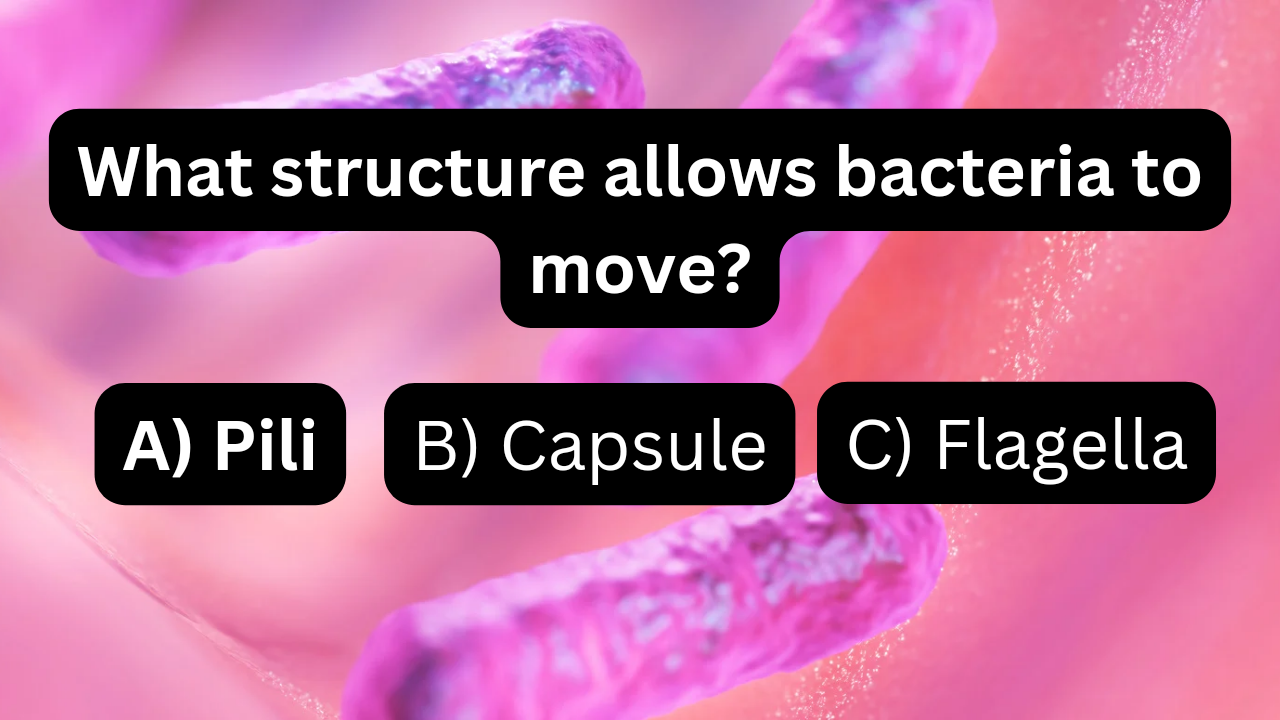| Here are basic microbiology questions and answers pdf 1. What type of microorganism is known to lack a true nucleus? A) Fungi B) Viruses C) Bacteria D) Protozoa Answer: C) Bacteria 2. Which staining technique is used to differentiate between Gram-positive and Gram-negative bacteria? A) Acid-fast stain B) Gram stain C) Endospore stain D) Negative stain Answer: B) Gram stain 3. What structure allows bacteria to move? A) Pili B) Capsule C) Flagella D) Ribosome Answer: C) Flagella 4. Which of the following is the primary component of bacterial cell walls in Gram-positive bacteria? A) Peptidoglycan B) Lipopolysaccharides C) Phospholipids D) Proteins Answer: A) Peptidoglycan 5. Which microorganism is responsible for causing malaria? A) Escherichia coli B) Plasmodium C) Staphylococcus aureus D) Candida albicans Answer: B) Plasmodium 6. Which of the following bacteria is an example of a Gram-negative organism? A) Staphylococcus aureus B) Bacillus subtilis C) Escherichia coli D) Mycobacterium tuberculosis Answer: C) Escherichia coli 7. Which viral structure is responsible for attachment to a host cell? A) Nucleic acid B) Envelope C) Capsid D) Spike proteins Answer: D) Spike proteins 8. Which of the following is a type of horizontal gene transfer in bacteria? A) Transformation B) Transcription C) Translation D) Mutation Answer: A) Transformation 9. Which of the following is not a form of sterilization? A) Autoclaving B) Filtration C) Refrigeration D) Radiation Answer: C) Refrigeration 10. What is the primary purpose of Koch’s postulates? A) To identify viruses B) To develop antibiotics C) To establish the cause of a disease D) To stain bacterial cells Answer: C) To establish the cause of a disease 11. Which of the following bacteria is known for its role in causing tuberculosis? A) Streptococcus pneumoniae B) Mycobacterium tuberculosis C) Escherichia coli D) Clostridium botulinum Answer: B) Mycobacterium tuberculosis 12. What type of microorganism is yeast? A) Bacterium B) Virus C) Algae D) Fungus Answer: D) Fungus 13. Which type of microorganism is studied in parasitology? A) Bacteria B) Fungi C) Protozoa and helminths D) Viruses Answer: C) Protozoa and helminths 14. What is the primary function of ribosomes in a bacterial cell? A) DNA replication B) Protein synthesis C) Energy production D) Motility Answer: B) Protein synthesis 15. Which chemical is commonly used as a disinfectant in microbiology labs? A) Ethanol B) Sodium chloride C) Glucose D) Agar Answer: A) Ethanol 16. Which of the following microorganisms can perform photosynthesis? A) Fungi B) Viruses C) Algae D) Protozoa Answer: C) Algae 17. In which phase of bacterial growth does the population size increase rapidly? A) Lag phase B) Log (exponential) phase C) Stationary phase D) Death phase Answer: B) Log (exponential) phase 18. Which of the following is an example of a facultative anaerobe? A) Clostridium botulinum B) Escherichia coli C) Mycobacterium leprae D) Treponema pallidum Answer: B) Escherichia coli 19. What type of microscopy is typically used to view viruses? A) Bright-field microscopy B) Dark-field microscopy C) Fluorescence microscopy D) Electron microscopy Answer: D) Electron microscopy 20. Which structure in bacteria is responsible for antibiotic resistance? A) Cell wall B) Flagella C) Plasmid D) Nucleoid Answer: C) Plasmid 21. What is the main difference between Gram-positive and Gram-negative bacteria? A) Gram-positive bacteria have a thick peptidoglycan layer. B) Gram-negative bacteria are all aerobic. C) Gram-positive bacteria have an outer membrane. D) Gram-negative bacteria lack a cell wall. Answer: A) Gram-positive bacteria have a thick peptidoglycan layer. 22. Which of the following microorganisms can survive in extreme environments, such as hot springs or salt lakes? A) Bacteria B) Archaea C) Protozoa D) Algae Answer: B) Archaea 23. What is the primary purpose of an autoclave in microbiology? A) To measure bacterial growth B) To sterilize equipment and media C) To incubate cultures D) To stain bacterial cells Answer: B) To sterilize equipment and media 24. Which microorganism is responsible for causing syphilis? A) Treponema pallidum B) Neisseria gonorrhoeae C) Bacillus anthracis D) Vibrio cholerae Answer: A) Treponema pallidum 25. What is the most common method for isolating bacteria from a mixed culture? A) Spread plate method B) Pour plate method C) Streak plate method D) Filtration Answer: C) Streak plate method 26. Which component is found in the cell wall of fungi but not in bacteria? A) Peptidoglycan B) Cellulose C) Chitin D) Lipopolysaccharides Answer: C) Chitin 27. What is the name of the enzyme that breaks down hydrogen peroxide in bacteria? A) Catalase B) Amylase C) Lipase D) Protease Answer: A) Catalase 28. Which of the following organisms is a common cause of food poisoning due to improperly cooked poultry? A) Escherichia coli B) Salmonella enterica C) Clostridium perfringens D) Staphylococcus aureus Answer: B) Salmonella enterica 29. What is the term for the transfer of DNA between bacteria through direct contact? A) Transformation B) Conjugation C) Transduction D) Transcription Answer: B) Conjugation 30. Which type of virus uses reverse transcriptase to replicate its genome? A) Adenovirus B) Retrovirus C) Papillomavirus D) Orthomyxovirus Answer: B) Retrovirus 31. Which staining technique is used to detect Mycobacterium tuberculosis? A) Gram stain B) Acid-fast stain C) Endospore stain D) Negative stain Answer: B) Acid-fast stain 32. What is the primary mode of reproduction for bacteria? A) Binary fission B) Mitosis C) Meiosis D) Budding Answer: A) Binary fission 33. What is the oxygen requirement for obligate anaerobes? A) Require oxygen B) Can survive with or without oxygen C) Require carbon dioxide D) Cannot survive in the presence of oxygen Answer: D) Cannot survive in the presence of oxygen 34. Which of the following microorganisms is classified as a eukaryote? A) Bacteria B) Virus C) Yeast D) Archaea Answer: C) Yeast 35. What is the role of the capsule in some bacteria? A) Provides motility B) Protects from phagocytosis C) Aids in reproduction D) Helps in DNA replication Answer: B) Protects from phagocytosis |
